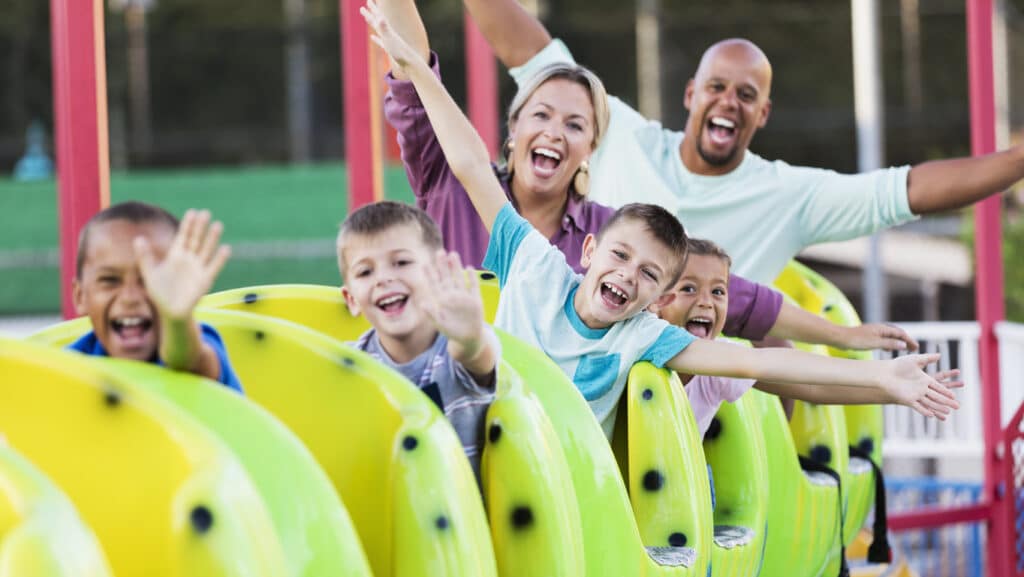Ups and Downs of Amusement Parks
Growing up with six active brothers, I developed a taste for speed, adventure and excitement. We had bikes, our woods, and Riverside Park in Agawam, Massachusetts in the 1960s and 70s, now a Six Flags. My favorite ride? The roller coaster. Whether the old fashioned wooden one like the Cannonball, in New Hampshire, or the powerful, green, gigantic Hulk in Islands of Adventure, Florida, the faster and crazier, the better.

But you might want to take some precautions before passing along your love of speed and excitement to your youngster with a bleeding disorder. Are roller coaster rides safe for children with bleeding disorders?
Overall, roller coasters are very safe, if you look at the statistics. From the International Association of Amusement Parks and Attractions (IAAPA) says there are approximately 0.9 injuries per million rides. In 2021, there were an estimated 1,200 ride-related injuries in the U.S. The most common injury involves the head or neck.
How can you play it safe?
First, take some common-sense precautions:
- Obey the listed age, height, weight, and health restrictions. Your child grows each year and has grown since last year — are they tall enough to qualify as a rider?
- Watch the ride first, so you know what to expect. See how riders are loaded and unloaded. Watch how the safety belts are fastened first, so that when you get on the ride, you know what to do.
- Ask the park employee to double check your safety belt.
- Keep you head, hands, arms legs and feet inside the ride at all times. Just like they tell you.
- Keep your eyes looking forward and your head up to protect your neck from injury. Roller coasters are prone to sudden accelerations and abrupt changes in direction. Keep you head up and looking forward to ensure the sudden jerks don’t hurt your neck. (I actually have cradled mine against the head rest to prevent the neck-snapping turns)
- Wait until instructed to remove your safety belt/lap bars/shoulder harnesses and exit the ride.
- Take frequent breaks between roller coaster rides. Give your body time to rest and readjust before jumping onto the next round. If you feel unwell, dizzy, or nauseated, don’t ride!
- Don’t get on a ride that looks poorly maintained. Be wary of those road-side, temporary carnivals.
- Don’t stand while a ride is in motion. Even if the ride stops mid-ride, stay seated, and wait for an operator to give further instructions.
And the best piece of advice?
Give your child a prophy dose before going to the park. Bring his supplies with you… just in case. Have him wear his medical ID jewelry. And know where the nearest HTC is if you are far from home.
A roller coaster ride is one up and down in life you can have safe fun with!

